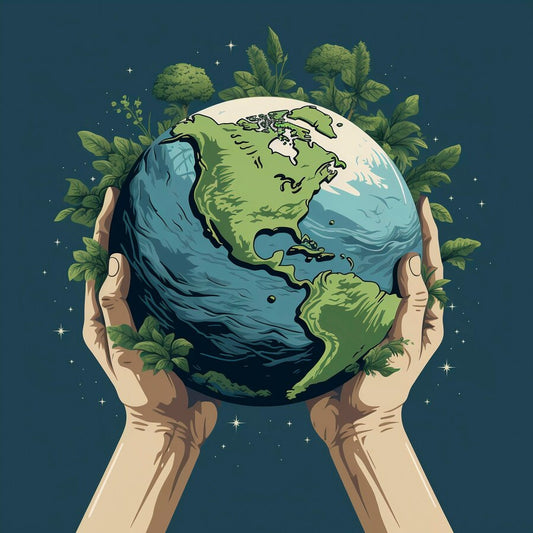Could a man-made fibre be a key contributor to cutting the fashion industry's impact on our planet? Let’s find out - meet TENCEL Lyocell!
It’s an increasingly popular material due to its flexibility, versatility and sustainability and can be used to make pretty much any garment you can think of.
So what is it? Why is it such a great material to make clothes? And is it good for our planet?
The Name
We’ve got to start with this! What does it mean?!
TENCEL is a brand name. Lyocell is the actual material. Lyocell itself was developed in 1972 by a team of scientists in the US. And since then multiple companies have developed it further. TENCEL is the current market leader, and created by an Austrian textile company called Lenzing AG. There are other brands who make Lyocell but all of our partners on Stix use the TENCEL brand.
What's it made of?
TENCEL is a man made fibre derived from wood. Wood is taken and chemically dissolved into a pulp which is then made into fibres to make clothes.
Is it Sustainable?
Yes! Here are 5 reasons why!
-
It’s made from wood that comes from PEFC or FSC forests or plantations, which means that sustainable forest management processes are used to sustain, conserve and restore forests for future generations to enjoy.
- The process used to break the wood down into pulp and then make the fibres uses a lot less energy than non-sustainable sources like traditional cotton (we’ve also seen claims that only renewable energy is used as well but we can’t guarantee this).
- The chemical solvent used in this process is non-toxic and uses a closed loop system that means over 99% of it is recovered, meaning little is released into the environment. The water used in the process is also recycled.
- Like most materials in fashion the fibres will be dyed (which is often not environmentally friendly) but it requires a lot less of it than other materials. And the raw fibres when they are produced are pure white, so unlike other materials such as cotton you don’t need to bleach it before dyeing.
- Finally, as it’s derived from wood, and provided it’s not mixed with synthetics, it is biodegradable (more on that below).
So it’s pretty awesome - it comes from sustainably managed forests, it uses less resources (water, chemicals, dyes) and it uses closed loop systems so little harmful substances get into our environment. Pretty good for a man made fibre!
Any drawbacks?
TENCEL is often blended with other materials (something only has to contain 30% TENCEL to be able to carry the brand name). If these materials are sustainable then that's fine - some of our brands blend it with things like organic hemp and organic linen.
But if they are blended with non-sustainable materials this is not good.
To take an example, if they are mixed with conventional cotton (so not recycled or organic) then the impact on the environment of growing that cotton eliminates a lot of the good that comes from using TENCEL.
Even worse, if it’s blended with synthetic materials then it’s not going to be biodegradable and then you have the emissions associated with producing the un-sustainable material used in that garment.
So make sure you check the label and don’t buy if it’s mixed with synthetic fibres or with conventional cotton as this will make the finished product a lot less eco friendly.
Fantastic for Fashion!
Aside from sustainability, TENCEL Lyocell is also a fantastic material for fashion because it is so versatile. Because it’s man made, you can vary the length of the fibres which means that you can vary its thickness and texture. You can create a wide range of “feels” that mimic natural materials like Silk or Cotton and it can be adapted for anything from shirts to workout gear.
It’s also got some amazing characteristics according to Lenzing which are particularly suited to active wear. It’s got a 50% higher absorption rate than Cotton (good for soaking up all that sweat!) and is more breathable than synthetics.
This flexibility and versatility all means that it’s going to play a key role in helping fashion become more sustainable in the future.
Our Verdict!
When we started Stix, we did not think that a man made fibre would be at the top of our list of sustainable materials!
We love TENCEL Lyocell. When done right, it’s a planet friendly material that uses less raw materials and stops pretty much all nasty chemicals leaking into our environments.
And it’s just a great material to make clothes from it - because of its flexibility it can mimic a whole range of natural or non-natural materials.
TENCEL will be one of the materials that will provide the basis of our collections therefore at Stix!




